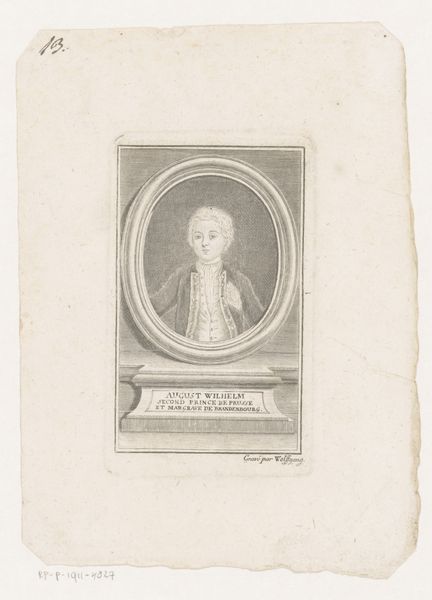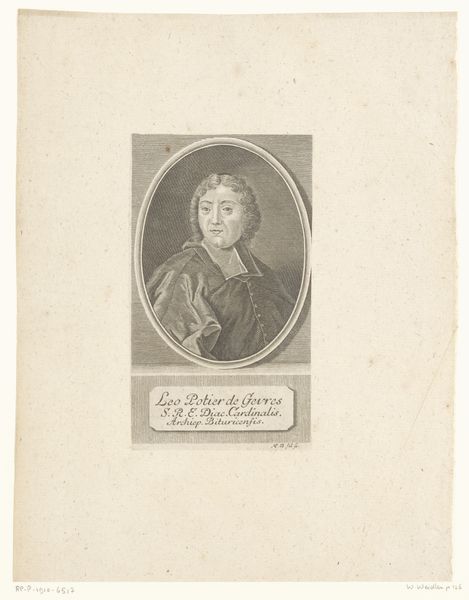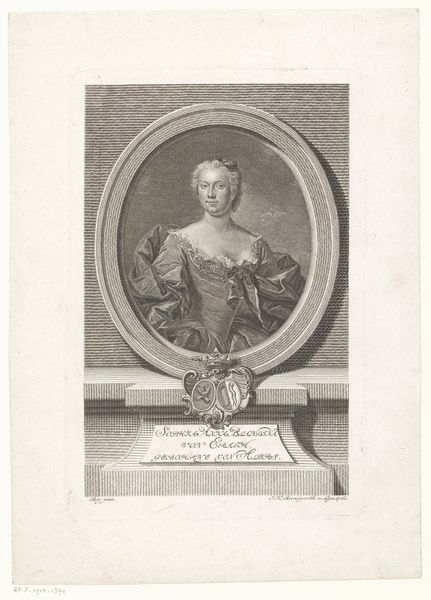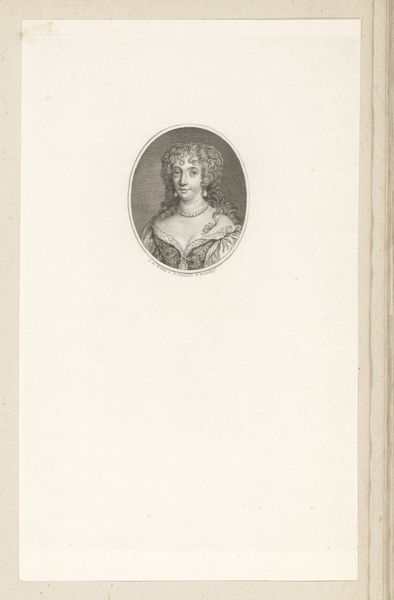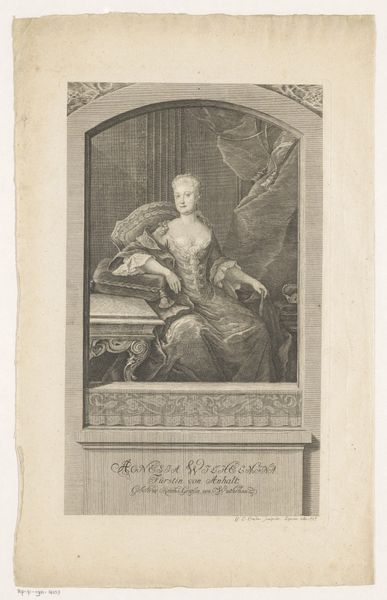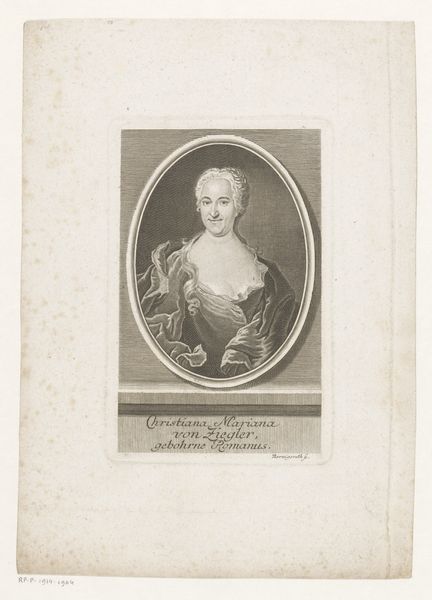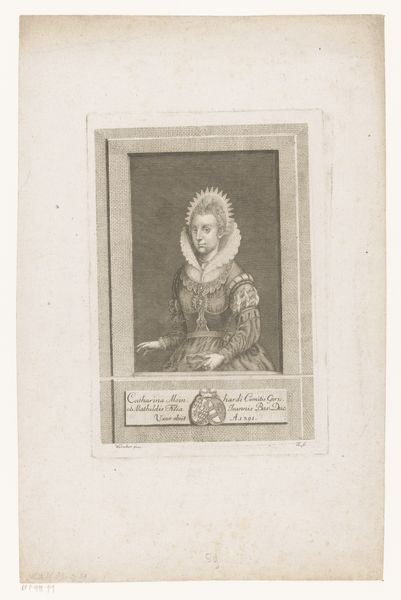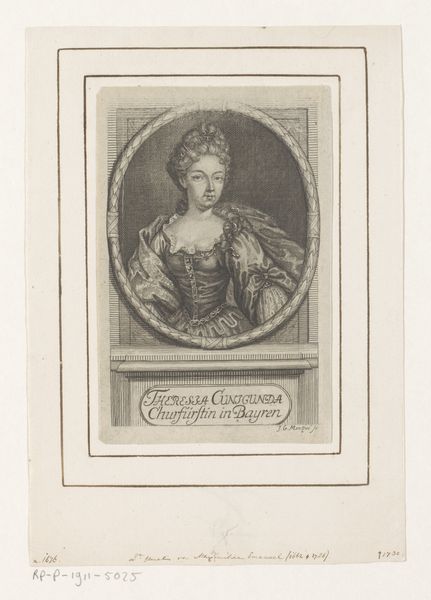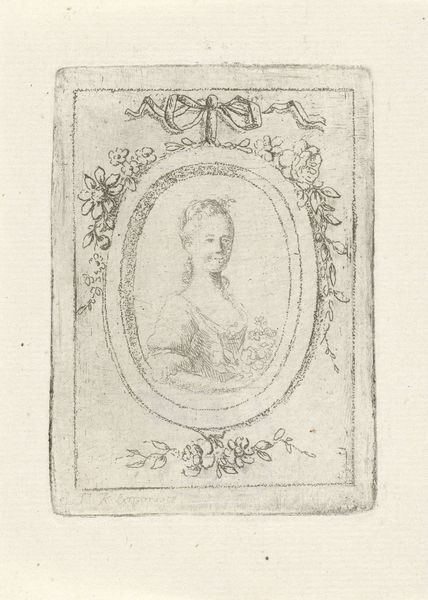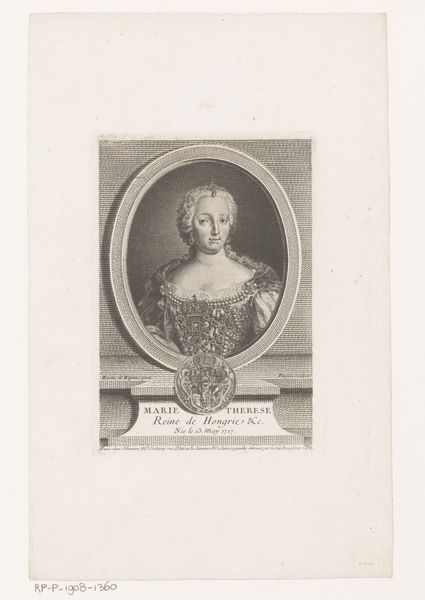
#
photo of handprinted image
#
aged paper
#
photo restoration
#
natural tone
#
ink paper printed
#
light coloured
#
white palette
#
nude colour palette
#
soft colour palette
#
watercolor
Dimensions: height 280 mm, width 190 mm
Copyright: Rijks Museum: Open Domain
Editor: Here we have a rather delicate portrait from 1773, identified as "Portret van Margaretha van Beieren," attributed to Joseph Anton Zimmermann. It's printed on what looks like aged paper, with a very subtle color palette. The overall effect is one of restrained elegance. How do you interpret this piece, particularly considering its historical context? Curator: This portrait offers a fascinating window into the social and political climate of the late 18th century and how the wealthy and powerful wanted to be seen. This wasn't about photographic likeness as much as constructing an ideal image of nobility. Note how she's framed almost like a precious object; even the aging of the paper adds to the aura of venerability that's being crafted. What message do you think Zimmerman was trying to convey with such an ornate depiction? Editor: Perhaps an attempt to legitimize or reinforce Margaretha’s status through a deliberate association with established artistic and noble traditions? The framing really emphasizes that point, like she’s meant to be displayed as a symbol of power. Curator: Precisely. Think about how portraits like this functioned within the household and for visitors. They were powerful tools of visual communication. How might it have shaped perceptions of her power and position in society? Editor: I suppose seeing her represented this way would reinforce her authority and project an image of wealth and refinement. I hadn't considered it that way before. Curator: It really highlights the interplay between artistic representation, power structures, and social perception during that era. Editor: Thank you. It’s amazing how much social history is embedded in a single portrait.
Comments
No comments
Be the first to comment and join the conversation on the ultimate creative platform.

